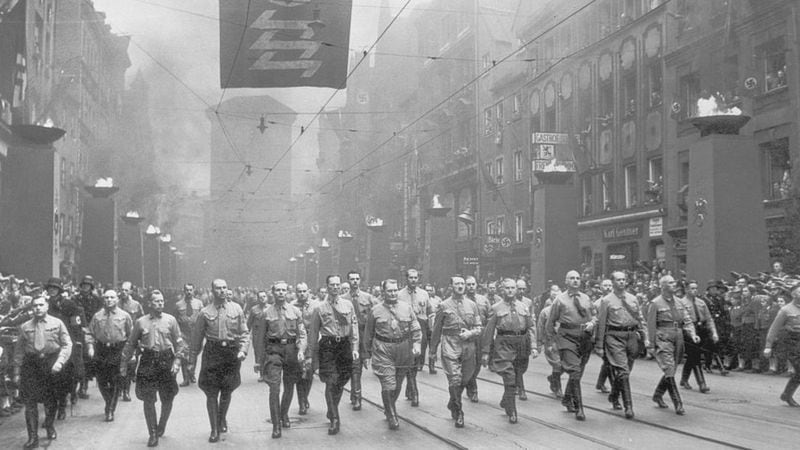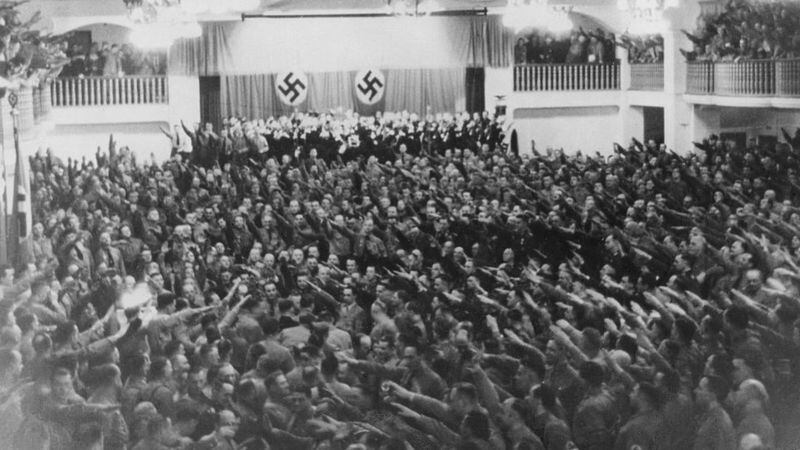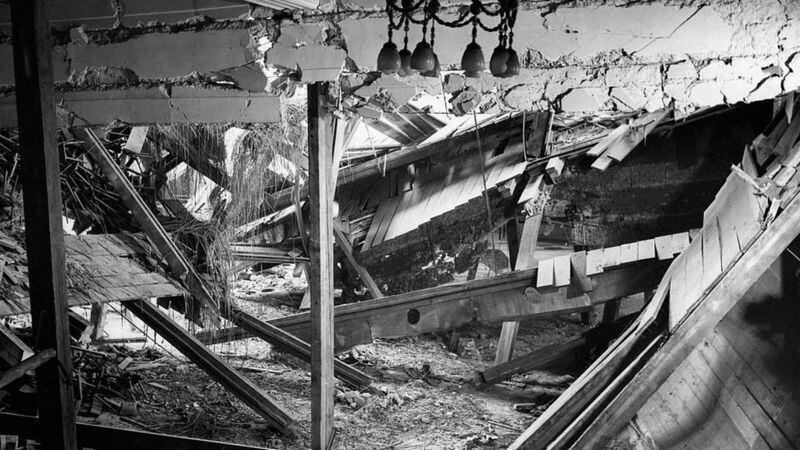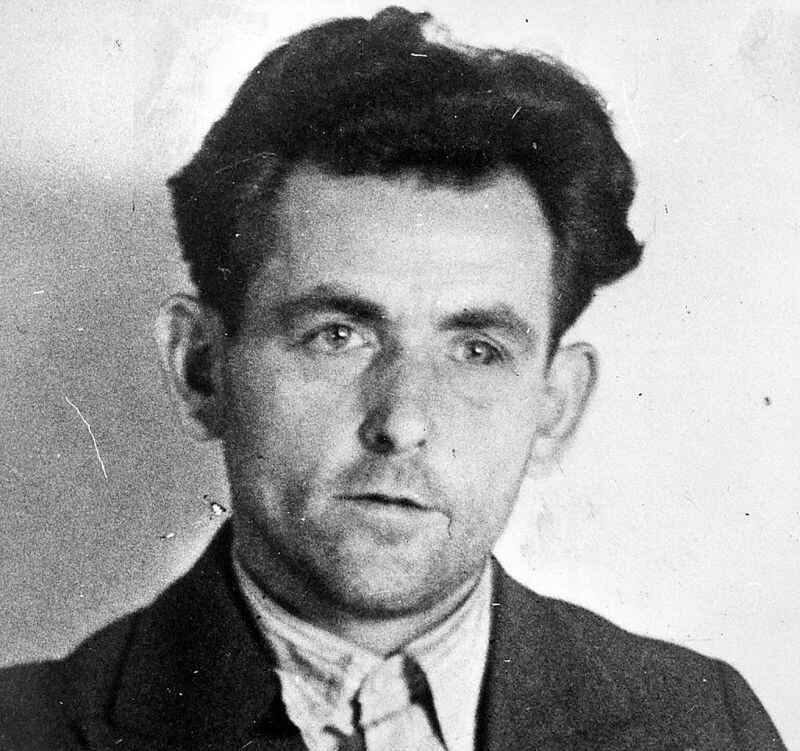On the night between November 8 and 9, 1923, a young man of Austrian descent broke into a political rally in the Bürgerbräukeller, one of Munich’s largest breweries.
With pistol in hand, he spoke to the attendees of the crowded brewery about the “social revolution” that would restore to Germany the glory it had lost after the First World War.
- South Africa’s annoyance at the “unjustified” international reaction to the new variant of the coronavirus detected in the country
- Who was the real “man in the iron mask”, the famous prisoner who was said to be the twin of King Louis XIV
- The historic passage of Queen Elizabeth II through Panama on her first trip abroad as monarch
Many of the attendees did not know this 34-year-old who had fought in the war – where he was wounded – and who later tried unsuccessfully to become an artist.
But some did know him: was Adolf Hitler, the leader of the National Socialist German Workers’ Party, NSDAP for its acronym in German, better known as the Nazi party.
Hitler had traded his artistic aspirations for political speeches that had made him one of the party’s main speakers since joining.
And his listeners found in his words the feeling of frustration that prevailed among the Germans during the so-called Weimar Republic, interwar Germany.
And it is that Hitler considered that the German rulers had betrayed the country and led Germany to a serious economic and political crisis that had weighed down the will of its citizens.
That night, Hitler and his followers stormed the rally, taking three generals captive and taking them to a separate room, where they were asked to join the cause and be loyal to the Nazis. His mission was to overthrow the Weimar Republic.
And it would all start there, in that brewery.
“We were used to all kinds of surprises at Bürgerbräukeller,” journalist Egon Larsen told the BBC at the time. “In those postwar years we had coups, rebellions, revolutions, shootings. But I think that November 9, 1923 probably brought the biggest surprise of all ”.
The coup attempt was known as the Beer Hall Putsch, or “the brewery coup,” the night the Nazis tried to seize power.
What happened that night and the following days gave Hitler the public image he needed to become, years later, the leader, the leader of Nazi Germany.
Germany’s problems
Germany was not going through its best moment.
The German government had to sign in 1919 the Treaty of Versailles as a result of his defeat in the First World War. With its signature, Germany accepted the moral and material responsibility for having caused the war.
The deal turned out to be highly unpopular with Germans, who believed their rulers had “stabbed Germany in the back” and humiliated the country.

In addition, it committed the government to a series of payments that it could not meet. As a consequence, France invaded the Rühr region and took over the factories and mines to collect what was owed to it.
This caused hyperinflation, which destroyed the economy of the fragile Weimar Republic. Wherever they had to go, the Germans carried large bales of bills to buy goods.
The coin had lost its value in such a way that those bills that had lost their value were destroyed. And prices were rising so fast that workers had to charge twice a day to cope with rampant inflation.

The crisis was also political, as various groups, including nationalists and communists, conspired to take power away from the ruling Social Democratic Party of Germany.
And one of them was the German Workers Party, founded in Munich in 1919. The crisis and food shortages caused the party to grow rapidly in membership and importance.
By 1920, the party changed its name to NSDAP and was already holding massive rallies among its more than 20,000 members, including Hitler. In two years, the future chancellor had become one of its most important speakers.
And in 1921, already president of the party. Hitler also had his own army made up of ex-soldiers and workers, the Sturmabteilung, to whom he gave the function of participating in political events and intimidating their opponents.
Following in the footsteps of Mussolini
In November 1923, Hitler and members of the Sturmabteilung organized a plot to take under his power the region of Bavaria, of which Munich was the capital.
The plan involved using the Bavarian state commissioner, Gustav von Kahr, already an important general of the First World War, Erich Ludendorff, as symbols of the coup. If he succeeded, and with Bavaria under his control, Hitler would march towards Berlin in the same way that Benito Mussolini had starred in the March on Rome and that began the fascist period in Italy.
And it so happened that leading Bavarian politicians, including von Kahr, met at the Bürgerbräukeller on the night of November 8.

Located in the heart of Munich, the Bürgerbräukeller was one of the largest breweries in Germany. Inaugurated in 1885, it had become a meeting space for political events whose hall had a capacity for up to 3,000 people.
So Hitler and the SA went to the Bürgerbräukeller, surrounded the brewery, and broke the session. There he shot at the ceiling and threatened those present with violence.
Von Kahr and two other characters, General von Lossow (leader of the Bavarian army) and Colonel von Seisser (head of the Bavarian police), were taken to a back room, where they were forced to publicly show their support for the Nazis, persuaded by both Hitler and Ludendorff.
Hitler left the brewery later that night to deal with the coup in other parts of the city. At least 2,000 Nazis were supposed to take control of government buildings and march the next day as a symbol of the capture of Munich.
Hitler had organized a demonstration march together with Ludendorff almost in the expectation that no member of the Bavarian police would dare to fire on the Nazis or Ludendorff himself.
“Ludendorff was known as’ the great man,” relates Larsen. “And the dramatic surprise was that old Ludendorff, with that fantastic name that could still be miracles in Germany, would join a man that more or less everyone had laughed at in Munich, Hitler.”
But the police fired. And that was the end of the Beer Hall Putsch.

Nazi Germany symbol
The confrontation lasted two hours and left 20 dead between members of the police and Nazis.
Hitler managed to escape to the nearby home of his friend Ernst Hanfstaengl and went into hiding for two days before being found by the police and sent to trial.
The men who were brought into the separate room at the brewery, Von Kahr, von Lossow and von Seisser, later said they had been blackmailed.
Hitler was charged with high treason and sentenced to five years in prison. And although he did not serve his sentence (he was released at nine months), his stay in prison helped him to write his well-known work My fight (“My struggle”).
But while the coup did not give Hitler the power he hoped for, it increased his popularity with the Germans. Convinced that he would not succeed in seizing power through a rebellion, he restructured the Nazi party and later managed to win seats in the German Parliament through elections.

By 1928, the Nazi party had 12 seats in Parliament. But by 1932 it had 230 and its membership was more than 130,000 people.
Hitler positioned himself as Germany’s central figure and enacted a 25-point program that included, among others, ending the Treaty of Versailles, returning land to the nation, and building a unified Germany where only its citizens had civil rights.
The coup also became a Nazi symbol. The 16 deceased Nazis became martyrs remembered in the prologue of “My struggle”. And every November 8, Hitler organized a symbolic march that ran through the streets of Munich from the Bürgerbräukeller to the city center to commemorate the first political uprising of the Nazi party.
Victim of attack
But the Bürgerbräukeller brewery was the scene of another political event that almost radically changed the fate of Germany.
Precisely on November 8 but 1939, 16 years after the Beer Hall Putsch, Hitler delivered his annual speech at the Bürgerbräukeller without knowing that in that same brewery an attempt was being planned to assassinate him.

For 30 nights, Georg Elser, a 36-year-old watchmaker from a small town in southern Germany, stayed late at the brewery, where he worked. There he managed to install a time bomb and place it on one of the columns of the Bürgerbräukeller.
Had his plan worked, he would have killed Hitler and changed the course of World War II, but the leader He changed the time of his speech and left the premises earlier, at 9:07 p.m. Thirteen minutes later the bomb exploded, killing 13 people and wounding dozens more.

The Gestapo caught Elser fleeing Germany for Switzerland and brought him to Berlin for questioning. In 1941 he was sent to the Sachsenhausen concentration camp; and in 1944 to Dachau, where he was executed on April 9, 1945.
After the attack, the Nazi party tried to rebuild the brewery; but the shortage of materials meant that the plan was never fully realized.
In its place is now the Gasteig cultural center, home of the Munich Philharmonic Orchestra.
_____________________________
- Journalist who reported on the start of the coronavirus in Wuhan is on the verge of death in jail, according to his family
- Mortuary clerk admits he committed dozens of sexual assaults on corpses
- Austria offers jobs with salaries of up to US $ 4,000 to foreigners, including Peruvians: what profession are they looking for and how to apply?
- Salt Bae Feeds Vietnam’s Communist Minister With More Than $ 1,100 Gold-Plated Steak | VIDEO
- Life sentence for woman who murdered five of her children in revenge because her husband left her
- Bill Gates talks about an upcoming threat that would put the world ‘in check’
.

:quality(75)/cloudfront-us-east-1.images.arcpublishing.com/elcomercio/HICQBAQGGNHU5PNPQ6U72XNP34.jpg)





